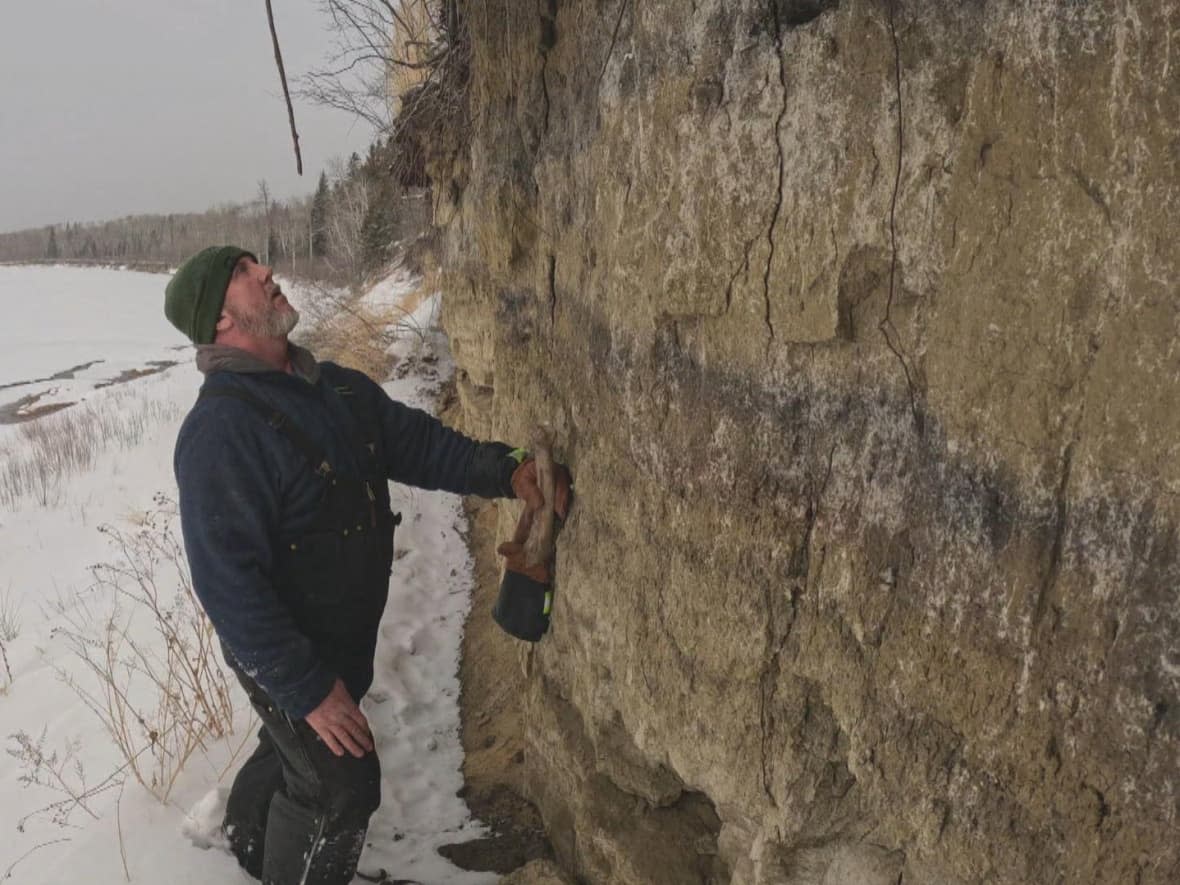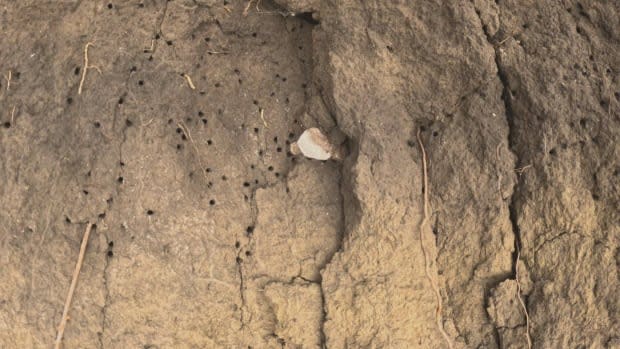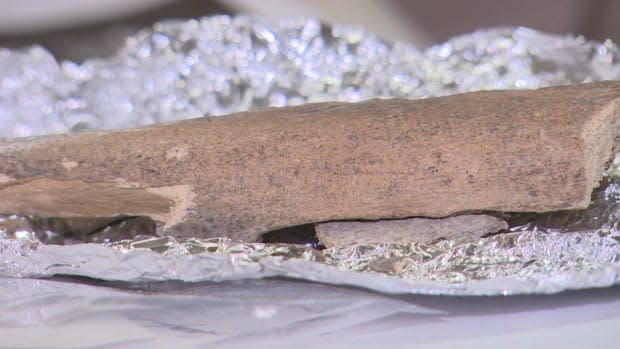Bison bone found in Prince Albert, Sask., area points to human life there more than 8,000 years ago

Community-oriented historian David Rondeau found a bison shoulder blade that is more than 8,000 years old at a cut bank near the North Saskatchewan river in Prince Albert, Sask.
"It's in itself quite surprising. It's about a thousand years older than what was previously thought for habitation in our area," Rondeau, also a consultation co-coordinator for Crutwell Metis Local 66, said.
"The dark lines in the hill, or paleosols, are indicative of human life. They are organic remains from habitation. There is a lot of evidence indicating that this was a large-scale bison processing area."
The site had been on Rondeau's radar for years, as he would often discover debitage — material produced during the production of stone tools and weapons — at the surface level.
Artifacts like an ovoid knife found at the site indicate people used to process animals there, removing the hides or flesh, Rondeau said.

Rondeau showed CBC many lithic and bone materials from the site, illustrating the evolution of habitations there. There was debitage material about 2,500 years old found just below the surface, and much older animal remains much further below the ground.
"This site is already telling the history, but there's no record of it in any history book, and I'm honoured to put this on the map to make it real for the people and children who live here."
Rondeau suspects the hill could have been a bison jump. He said holding the bone of a bison makes it real for him and the nearby community of Sturgeon Lake First Nation, connecting them with the history.
WATCH| Bison bone confirmed to be more than 8,000 years old found in Prince Albert:
Oldest intact human site in Prince Albert area
David Meyer, professor emeritus of archaeology and anthropology at University of Saskatchewan, inspected the site along with Rondeau last year.
Meyer said the thick layer of old black soil had bits of bison bones sticking out of it and sharp quartz flakes, indicating human presence. He said a piece of the bison shoulder blade was removed and sent for radiocarbon dating at a University of Ottawa laboratory.
"It came back as some 8,200 years old. I knew it was old and was thinking in the 6,000 years range, but this is remarkably old," he said.
"It's the oldest intact human occupation area that has been found in the Prince Albert area."

Meyer said equally old material had also been found along the South Saskatchewan river at St. Louis bridge, 35 kilometres south of Prince Albert, in the past.
Up to 11,000 years ago, the whole central Saskatchewan area was covered with glacial ice. Meyer said it would have become hospitable for human habitation around 10,500 years ago.
He said around 8,000 years ago, a cultural group called Nipawin complex, from the Great Plains, lived in these regions.
"Certainly, these people seemed to have been the first really widespread, well-established societies, and hunter and gatherers of course," he said.
"They were hunting the older species of bison and buffalo with spear throwing or atlatls [a spear or dart throwing device], as bows and arrows were not yet invented."

Some atlatl dart points dating 8,500 to 11,000 years have been found close to the Montana border and around southern Saskatchewan. Similar atlatl points have been found at Besnard Lake and Buffalo Narrows in northern Saskatchewan.
"The Prince Albert find will provide important information about that region."
Rondeau said a geoarcheologist from the University of Calgary is expected to assess the site in the spring. Among other things, she is expected to take samples of soil, ancient pollen and phytoliths, which will illustrate what the landscape was like at that time.
"This is pretty early," Meyer said of the work being done at the site. "It is quite significant but more needs to be found."



